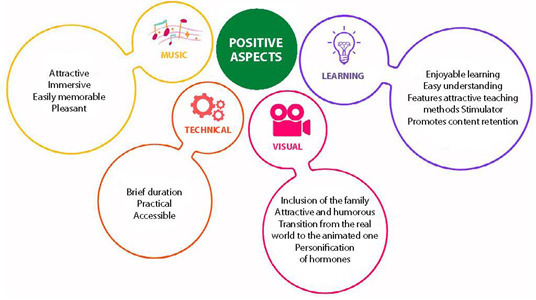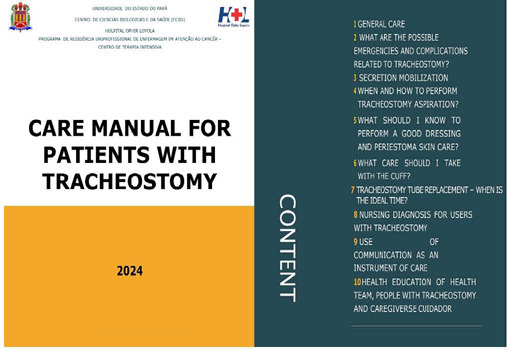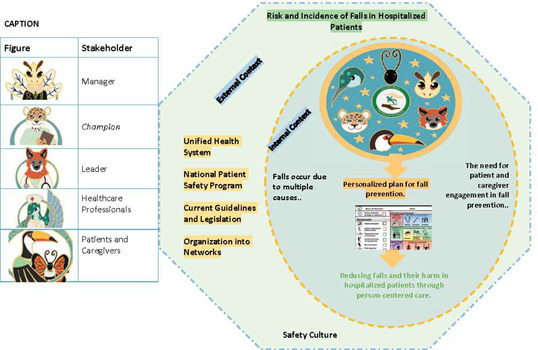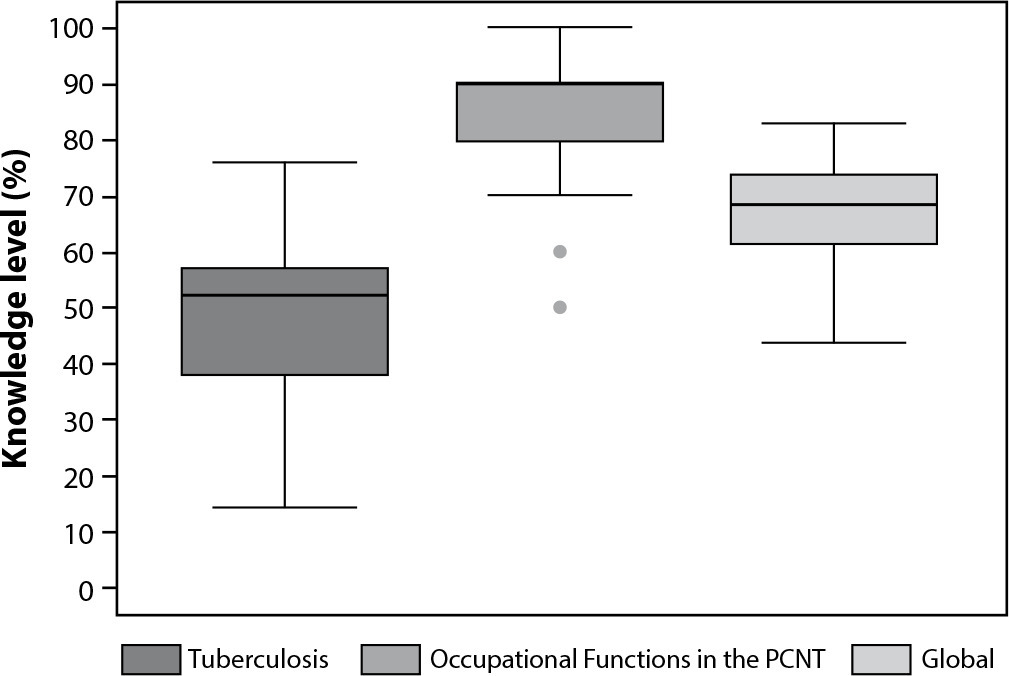-
ORIGINAL ARTICLE05-27-2024
Assessment of educational technology in lactation physiology by health students
Revista Brasileira de Enfermagem. 2024;77(2):e20230252
Abstract
ORIGINAL ARTICLEAssessment of educational technology in lactation physiology by health students
Revista Brasileira de Enfermagem. 2024;77(2):e20230252
DOI 10.1590/0034-7167-2023-0252
Views0See moreABSTRACT
Objectives:
to assess the suitability, facilitators, and barriers of using a video clip for teaching lactation physiology to health students.
Methods:
a cross-sectional study was conducted with online data collection at a higher education institution, using the Assistive Technology Assessment Instrument and open-ended questions. The sample consisted of 88 students.
Results:
the video clip was deemed suitable in all attributes. Facilitators identified included attractiveness, musicality, and ease of access. Barriers noted were the music’s speed and the necessity for prior knowledge. The video clip achieved adequate scores for interactivity (1.71), purpose (1.77), relevance (1.64), and clarity (1.77). The overall average of the attributes was 1.72.
Conclusions:
the video clip can serve as an effective learning strategy to enhance hybrid education, potentially contributing to the promotion and support of breastfeeding. However, some barriers underscore the importance of prior knowledge for a complete understanding of the content.

-
ORIGINAL ARTICLE05-27-2024
Technology for nursing care in a Maternal Intensive Care Unit: a methodological study
Revista Brasileira de Enfermagem. 2024;77(2):e20230202
Abstract
ORIGINAL ARTICLETechnology for nursing care in a Maternal Intensive Care Unit: a methodological study
Revista Brasileira de Enfermagem. 2024;77(2):e20230202
DOI 10.1590/0034-7167-2023-0202
Views0See moreABSTRACT
Objectives:
to develop and validate a nursing care plan in a Maternal Intensive Care Unit.
Methods:
a methodological study, developed in stages: integrative review; Nursing History construction; care plan restructuring; appearance and content validity by judges.
Results:
the history was organized into sections: Identification; Basic Human Needs; Physical Examination; and Assessment of Basic Human Needs. A care plan was restructured with 34 diagnoses, organized according to basic human needs. A satisfactory level of appearance validity of the history and care plan was obtained (Concordance Index varying between 86.3 and 100 for both instruments), and content validity with average indexes of 90.8 and 92.8, respectively. Thirty-four diagnoses, their interventions and nursing actions were consolidated.
Conclusions:
the instruments were considered relevant and pertinent in terms of appearance and content, and their use in the institution under study as well as in other similar services may be recommended.
-
ORIGINAL ARTICLE05-27-2024
Nursing care protocol for critical users with tracheostomy under mechanical ventilation
Revista Brasileira de Enfermagem. 2024;77(2):e20230337
Abstract
ORIGINAL ARTICLENursing care protocol for critical users with tracheostomy under mechanical ventilation
Revista Brasileira de Enfermagem. 2024;77(2):e20230337
DOI 10.1590/0034-7167-2023-0337
Views0See moreABSTRACT
Objectives:
to develop and assess a nursing care protocol for critically ill users with tracheostomy under mechanical ventilation.
Methods:
a methodological study, developed through two phases, guided by the 5W2H management tool: I) target audience characterization and II) technology development.
Results:
thirty-four nursing professionals participated in this study, who presented educational demands in relation to care for critical users with tracheostomy, with an emphasis on standardizing care through a protocol and carrying out continuing education.
Final Considerations:
the creation and validity of new technologies aimed at this purpose enhanced the participation of nursing professionals and their empowerment in the health institution’s microsectoral actions and in macrosectoral actions, highlighting the need for public policies that guarantee the conduct of a line of care for users with tracheostomy.

-
ORIGINAL ARTICLE05-27-2024
Fall Tailoring Interventions for Patient Safety Brazil Program: an evaluability study in a teaching hospital
Revista Brasileira de Enfermagem. 2024;77(2):e20230348
Abstract
ORIGINAL ARTICLEFall Tailoring Interventions for Patient Safety Brazil Program: an evaluability study in a teaching hospital
Revista Brasileira de Enfermagem. 2024;77(2):e20230348
DOI 10.1590/0034-7167-2023-0348
Views0See moreABSTRACT
Objectives:
to present the theoretical model, logic model, and the analysis and judgment matrix of the Fall TIPS Brazil Program.
Methods:
a qualitative, participatory research approach, in the form of an evaluability study, encompassing the phases (1) problem analysis; (2) program design, development, and adaptation to the Brazilian context; (3) program dissemination. Data were collected through document analysis and workshops.
Results:
through document analysis, workshops with stakeholders from the participating institution, and validation with key informants, it was possible to identify the program’s objectives, expected outcomes, and the target audience. This allowed the construction of theoretical and logic models and, through evaluative questions, the identification of indicators for the evaluation of the Fall TIPS Brazil Program.
Final Considerations:
this study has provided insights into the Fall TIPS program, the topic of hospital fall prevention, and the proposed models and indicators can be employed in the implementation and future evaluative processes of the program.

-
05-13-2024
Qualitative methodology: considerations and singularities regarding the implementation of person-centered interventions
Revista Brasileira de Enfermagem. 2024;77(3):e770301
Abstract
Qualitative methodology: considerations and singularities regarding the implementation of person-centered interventions
Revista Brasileira de Enfermagem. 2024;77(3):e770301
DOI 10.1590/0034-7167.2024770301
Views0Qualitative health research allows for an in-depth understanding of how a person experiences different health transitions, their relationship with healthcare professionals and their passage through different clinical practice environments. At the same time, it has the potential to support professionals’ clinical decision-making and to empower citizens in their autonomy and responsibility for the health-disease process, […]See more -
05-13-2024
Metodologia qualitativa: considerações e singularidades sobre a implementação de intervenções centradas na pessoa
Revista Brasileira de Enfermagem. 2024;77(3):e770301
Abstract
Metodologia qualitativa: considerações e singularidades sobre a implementação de intervenções centradas na pessoa
Revista Brasileira de Enfermagem. 2024;77(3):e770301
DOI 10.1590/0034-7167.2024770301pt
Views0A investigação qualitativa em saúde permite a compreensão aprofundada de como a pessoa experiencia as diferentes transições de saúde, a relação com os profissionais de saúde e a passagem pelos diferentes ambientes de prática clínica. Concomitantemente, tem o potencial de suportar a tomada de decisão clínica dos profissionais e de empoderar o cidadão na sua […]See more -
ORIGINAL ARTICLE05-13-2024
Factors associated with Community Health Agents’ knowledge about tuberculosis
Revista Brasileira de Enfermagem. 2024;77(2):e20220520
Abstract
ORIGINAL ARTICLEFactors associated with Community Health Agents’ knowledge about tuberculosis
Revista Brasileira de Enfermagem. 2024;77(2):e20220520
DOI 10.1590/0034-7167-2022-0520
Views0See moreABSTRACT
Objective:
To analyze the factors associated with the knowledge of Community Health Agents (ACS) about tuberculosis.
Methods:
A cross-sectional study was conducted with 110 ACS. A questionnaire was used to assess knowledge about pulmonary tuberculosis (component 1) and the work functions of ACS in the National Tuberculosis Control Program (component 2). The level of knowledge, according to the scores converted into a scale of 0 to 100, was classified as: 0-50% (low), 51-75% (medium), and over 75% (high). Multiple regression was used in the analysis of associated factors.
Results:
The global score (average of the scores of components 1 and 2) median knowledge was 68.6%. Overall knowledge about tuberculosis was positively associated with the length of professional experience, having received training on tuberculosis, and access to the tuberculosis guide/handbook.
Conclusions:
Investments in training and capacity-building strategies for ACS will contribute to increasing these professionals’ knowledge, resulting in greater success in tuberculosis control.

-
05-13-2024
Preditores de nanismo entre crianças de 0 a 24 meses no Sudeste Asiático: Uma revisão do escopo
Revista Brasileira de Enfermagem. 2024;77(2):e20220625
Abstract
Preditores de nanismo entre crianças de 0 a 24 meses no Sudeste Asiático: Uma revisão do escopo
Revista Brasileira de Enfermagem. 2024;77(2):e20220625
DOI 10.1590/0034-7167-2022-0625
Views0See moreRESUMEN
Objetivo:
Identificar indicadores de desnutrición crónica entre niños de 0 a 24 meses en el Sudeste Asiático.
Métodos:
Esta revisión de alcance se centró en artículos con diseño de estudio observacional publicados en inglés, entre los años 2012 y 2023 de cinco bases de datos internacionales. Las principales palabras clave utilizadas fueron: “stunting (Desnutrición crónica)” o “growth disorder (Desorden del crecimiento)”, y “newborn (Recién nacido)”, y “predict (Predecir)”, y “Southeast Asia (Sudeste Asiático)”.
Resultados:
De los 27 artículos seleccionados para el análisis final, se encontraron trece indicadores que influyen en la desnutrición crónica en siete países del Sudeste Asiático. Los trece indicadores incluyen el niño, la madre, el hogar, la alimentación inadequada complementaria, la lactancia materna inadecuada, la atención inadecuada, los alimentos de mala calidad, la seguridad de los alimentos y el agua, la infección, la economía política, la salud y la asistencia sanitaria, el agua, el saneamiento y el medio ambiente, y por último el factor sociocultural.
Conclusión:
Todos estos indicadores pueden provocar desnutrición crónica en niños del Sudeste Asiático. Para poder prevenirlo los prestadores de servicios de salud y otros sectores relacionados, necesitan realizar actividades de promoción y prevención de la salud de acuerdo con los indicadores encontrados en este artículo.
Search
Search in:
Nuvem de Tags
Enfermagem (930)Cuidados de Enfermagem (269)Atenção Primária à Saúde (239)Idoso (208)Educação em Enfermagem (151)Segurança do Paciente (150)Saúde Mental (145)Educação em Saúde (139)Estudos de Validação (131)Qualidade de Vida (104)Tecnologia Educacional (100)Promoção da Saúde (99)COVID-19 (91)Criança (91)Família (87)Enfermagem Pediátrica (86)Saúde do Trabalhador (86)Adolescente (85)Saúde Pública (82)Estudantes de Enfermagem (77)





